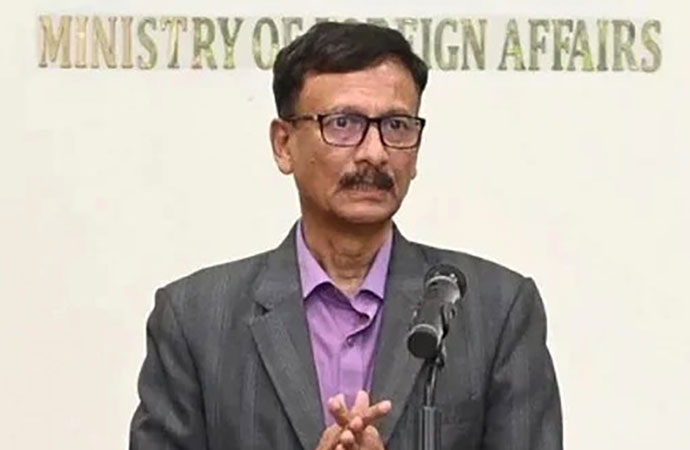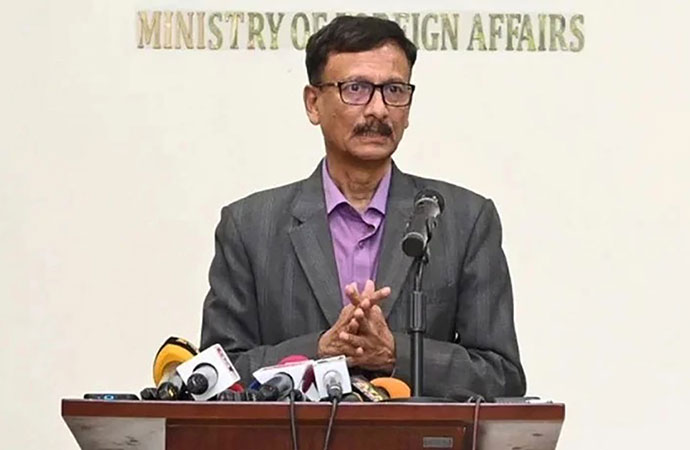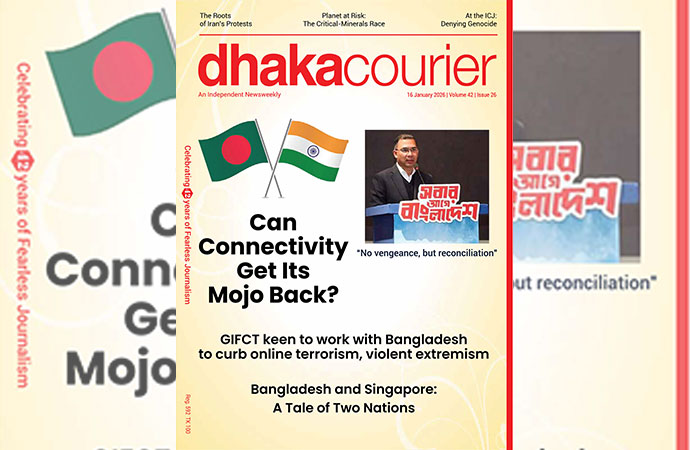Culture

Afrozaa Jamil Konka. Photo: Courtesy
Playwright Choyon Khairul Habib and artist Afrozaa Jamil Konka’s tribute to Bangabandhu goes on display at National Museum on May 12
Commemorating the birth centenary of the Father of the Nation Bangabandhu Sheikh Mujibur Rahman, France-based Bengali playwright Choyon Khairul Habib and eminent Bangladeshi artist Afrozaa Jamil Konka have collaborated on creating a unique project titled "Bangalir Porichoy Kabbo", an epic verse engraved on 'Taal Patar Puthi' (manuscript on palm leaves).
At the Nalini Kanta Bhattashali Gallery of National Museum, the 'puthi' will be unveiled and showcased to the general audience through an exclusive exhibition - set to be inaugurated on May 12 at 3 pm.
The concept of 'puthi' redirects to a book or manuscript which contains lyrical versions of spiritual text or mythical tales from Bengal. A 'puthi' could have pages made of bark, leather, wood, or even leaves. Before paper was introduced, these materials were commonly used.
However, with the advent of mass use of paper and development of printing, this unique literary element was lost and almost became extinct.
Choyon Khairul Habib has written the verse titled "Bangalir Porichoy Kabbo" which evolved around Bangabandhu's revolutionary life - focusing on his role in the 1952 Language Movement to leading the 1971 Liberation War. This was written in 2020 on the occasion of Bangabandhu's birth centenary, while the writer was residing in France.
"In this epic poem-turned-puthi, I have highlighted the history of Bangladesh, the evolution of the Bengali community and the nationality alongside the symbolic narrative of Bangabandhu. I have been interested in Bengali puthi for a long time. From 2010 to 2019 when I wrote the operatic 'Julekha Trilogy', I read a lot of puthi. Since I started writing 'Bangalir Porichoy Kabbo', the incentive to preserve the work with palm leaf puthi was in my plan," according to Choyon Khairul Habib.
Even though handmade palm leaf fans exist as a local craft in Bangladesh, there are no remaining artisans skilled in palm leaf painting.
"It was Choyon Khairul Habib's idea to transform the verse into 'taal pata puthi' (palm leaf scroll) and he approached me in 2020 to collaborate on this project," renowned artist Afrozaa Jamil Konka told UNB. "However, I was sceptical because of the intricate details of the work, so I humbly turned him down."
"He again asked me after a while if I was still interested to work on the project and I told him to ask other artists, but he insisted that I, and I only should do the project. He sent me the epic verse, I read it, and got even more nervous! This verse is so intense and expressive and beautiful that I thought I wouldn't be able to the justice," she said.
"However, my inner-self told me that I should take the challenge and go forward. While doing the paintings on the palm leaves the whole picture of our Father of the Nation's life and sacrifices became visible in front of me. My emotions, sensitivity, the sense of belonging became alive," the artist told UNB.
Sharing her emotional state while crafting the work, she said, "When I painted the last verse which is about the dawn of August 15, 1975, I became very emotional because I'm the second daughter of Shaheed Colonel Jamil, who sacrificed his life to save the Father of the Nation. I poured myself into that history while crafting the puthi. It was a great challenge for me to depict Bangabandhu's sacrifice for the nation on a palm leaf scroll, but now I know why Choyon Khairul Habib chose me."
Regarding the process of transforming the verses into the puthi scripts on palm leaves, Konka said, "I have transformed the verses into the palm leaf scrolls by writing the verses and painting accordingly on the leaves. While researching for the project, I visited the Dhaka University Library, which has an astonishing collection of this type of work. I also visited the National Museum for its collection of palm leaf puthi, and Bangla Academy also has some. I have some palm leaf scrolls from Odisha, India as well."
While proceeding with the project, the artist found that the skill related to writing on palm leaves has disappeared from Bangladesh. The demonstrating artist for this project was Prashant Maharana, a Puri-based artist from Odisha, India. This method of painting still exists in Puri, Odisha, and other parts of India, according to Konka.
"Initially, I was supposed to go to Puri to learn the process but due to time constraints and other reasons, I invited Prashant Maharana to Bangladesh, who is a 7th-generation 'taal pata chitra' artist. With artist Prashant's help in engraving, I completed the project in 6 months. We aimed to complete the taal pata puthi around Bangabandhu's birth centenary but we could not progress due to the Covid-19 pandemic," she said.
This project is to revive the ancient art of 'taal pata puthi chitra' which has been lost in time, according to both Choyon Khairul Habib and Afrozaa Jamil Konka.
Both said that they are proud and happy that an exclusive exhibition at the National Museum will display the 'puthi' from May 12 to May 23.
"We also have plans to take the exhibition to all the major cities of Bangladesh as well as France and India. We believe, this unique exhibition of 'taal pata puthi' will inspire a new generation to preserve our rich heritage and will also enrich them and help them to relate to the multi-layered life of our nation's founding father, Bangabandhu Sheikh Mujibur Rahman, and our great Liberation War," Konka told UNB.

























Leave a Comment
Recent Posts
Remembering Kalidas Karmakar ( ...
The art world remembers Kalidas Karmakar, a visionary whose creativity ...
An Evening with Shishir Bhatta ...
Cosmos Art Echo, the artist talk initiative of Gallery Cosmos and Cosm ...
Myanmar denies genocide, calls Rohingya crackdown co ..
Yes, of course
Earth’s average temperature last year hovered among ..
Bangladesh and Singapore: A Tale of Two Nations